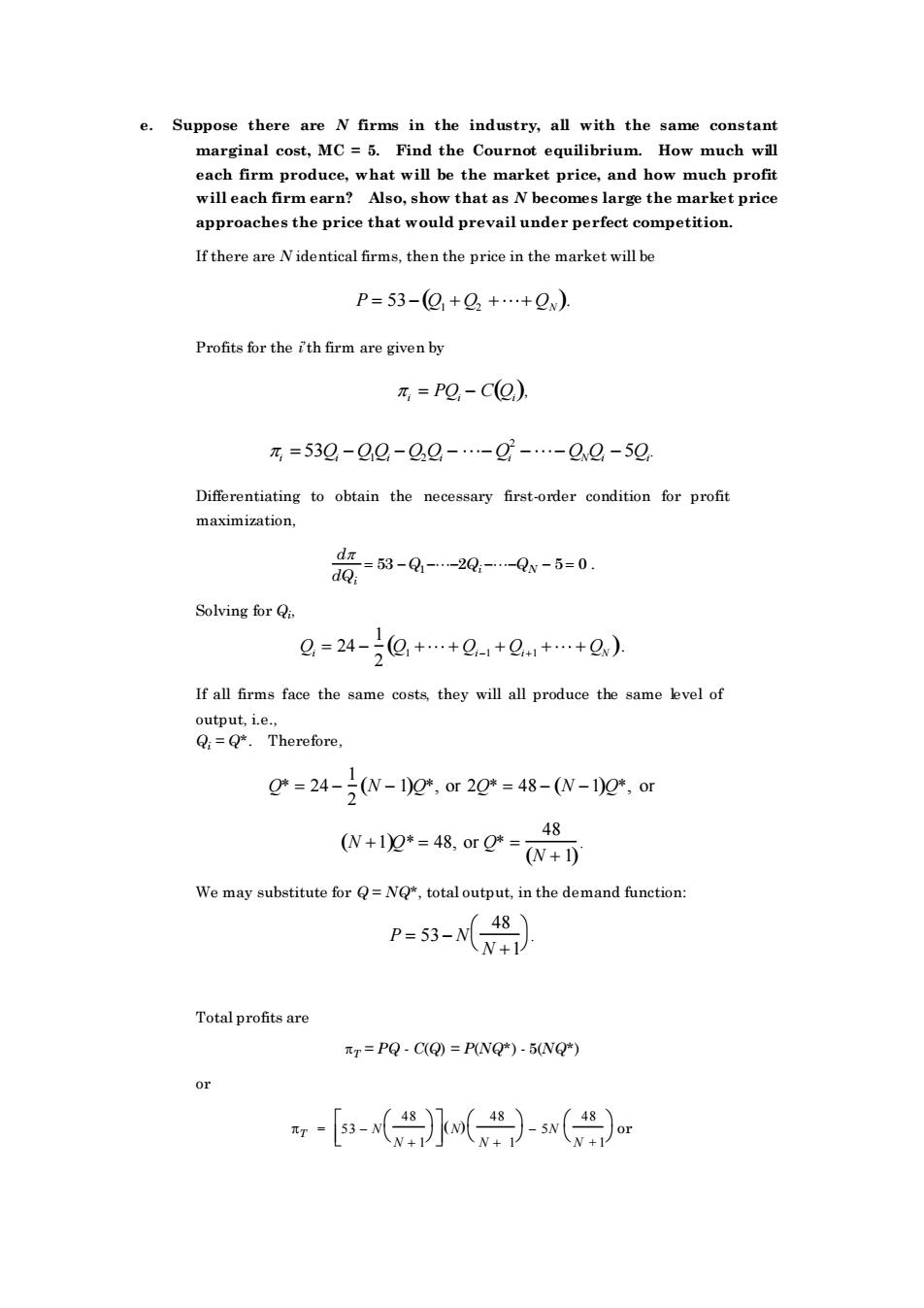正在加载图片...

e.Suppose there are N firms in the industry,all with the same constant marginal cost,MC=5.Find the Cournot equilibrium.How much will each frm produce, what will be the market price,and ho ow much profi will each firm earn?Also,show that as N becomes large the market price approaches the price that would prevail under perfect competition. If there are Nidentical firms,then the price in the market willbe P=53-g,+g++Qx) Profits for the ith firm are given by =Pe-c(2.). 元=530-22-2,2-g2-0.2-50 Differentiating to obtain the necessary first-order condition for profit maximization, 0-朗-g-20-6s-6-0 Solving for Qi g=24-g,+.+g+g+.+0) If all firms face the same costs they will all produce the same kvel of output,1.e. Q=Q.Therefore, Q=24-0w-10*,or20*=48-w-1g,or W+12*=48org=N+ 8 We may substitute for Q=NO,totaloutput,in the demand function P=3-N) Total profits are T=PQ-C(Q)=P(NQ)-5(NQ*) (w( e. Suppose there are N firms in the industry, all with the same constant marginal cost, MC = 5. Find the Cournot equilibrium. How much will each firm produce, what will be the market price, and how much profit will each firm earn? Also, show that as N becomes large the market price approaches the price that would prevail under perfect competition. If there are N identical firms, then the price in the market will be P = 53 − Q1 + Q2 + + QN ( ). Profits for the i’th firm are given by i = PQi − C Qi ( ), i = 53Qi − Q1Qi − Q2Qi − − Qi 2 − − QNQi − 5Qi . Differentiating to obtain the necessary first-order condition for profit maximization, d dQ Q Q Q i i N = 53 − − −2 − − − 5= 0 1 . Solving for Qi , Qi = 24 − 1 2 Q1 + + Qi −1 + Qi +1 + + QN ( ). If all firms face the same costs, they will all produce the same level of output, i.e., Qi = Q*. Therefore, Q* = 24 − 1 2 (N − 1)Q*, or 2Q* = 48 − (N −1)Q*, or (N +1)Q* = 48, or Q* = 48 (N + 1) . We may substitute for Q = NQ*, total output, in the demand function: P = 53 − N 48 N +1 . Total profits are T = PQ - C(Q) = P(NQ*) - 5(NQ*) or T = 5 3 − N 4 8 N + 1 ( N) 4 8 N + 1 − 5N 4 8 N +1 or